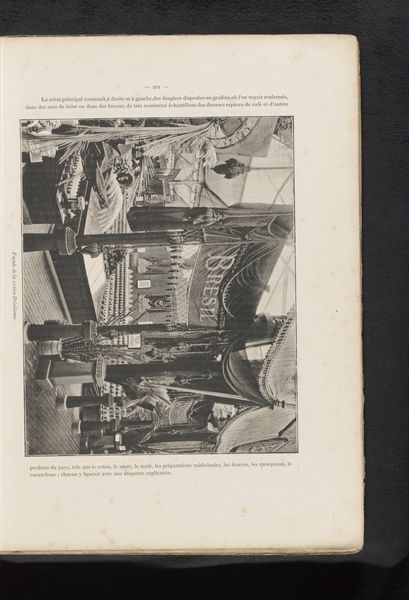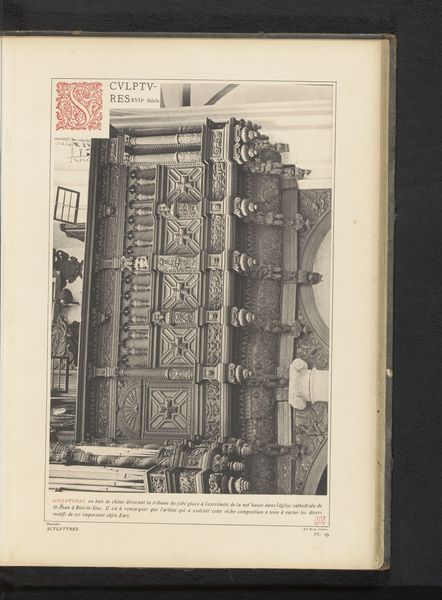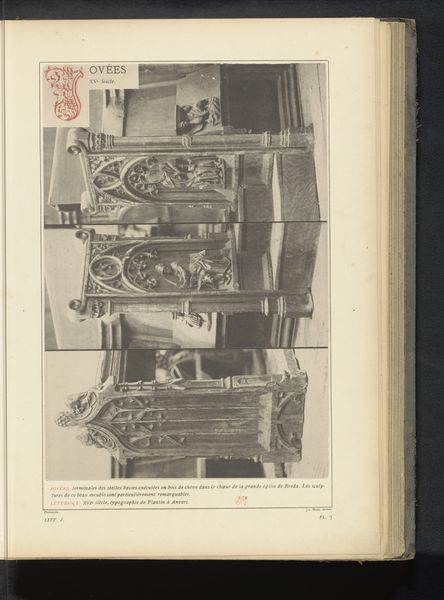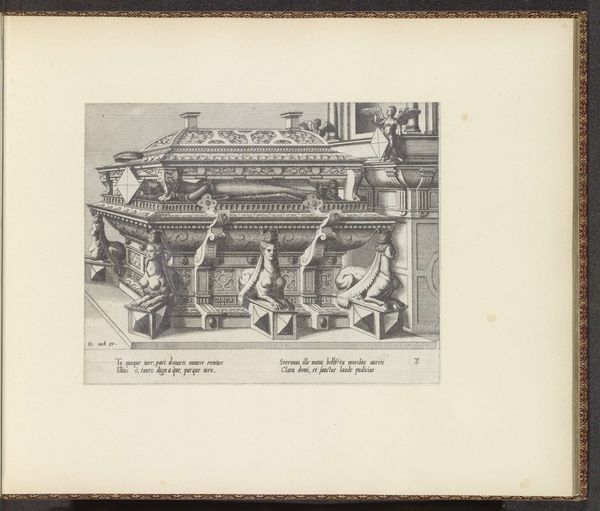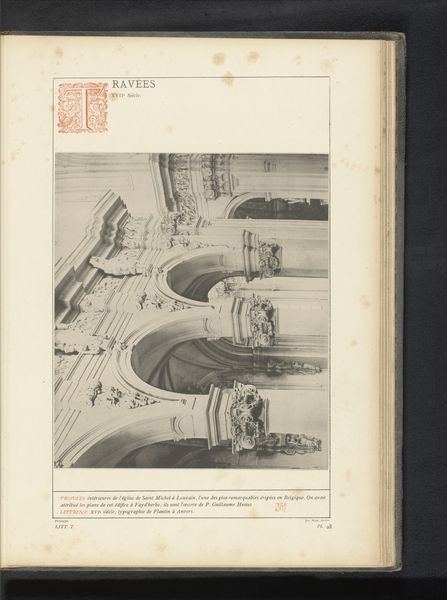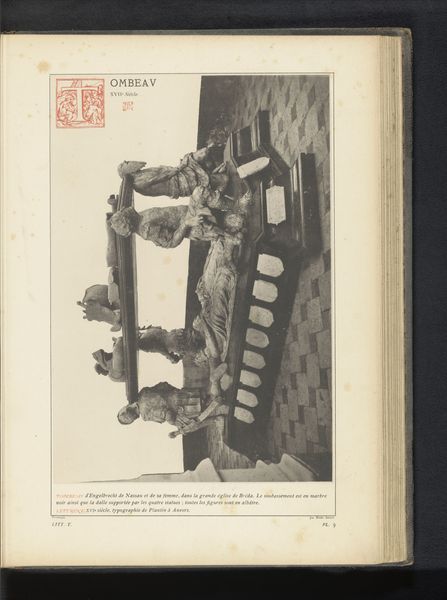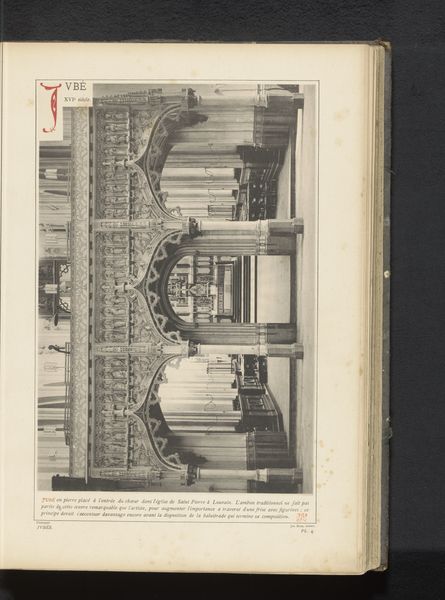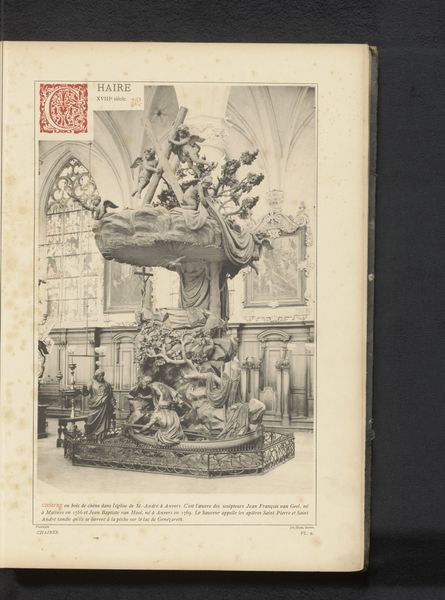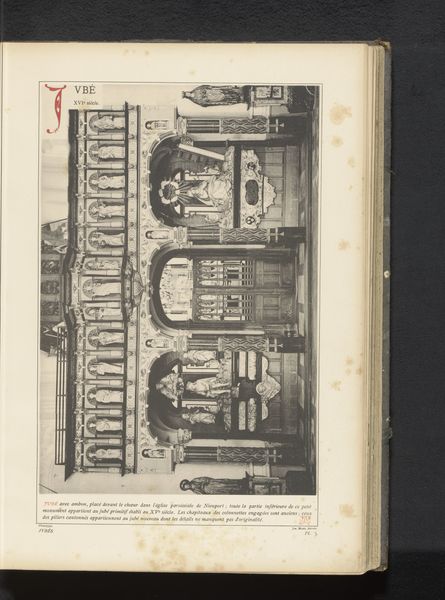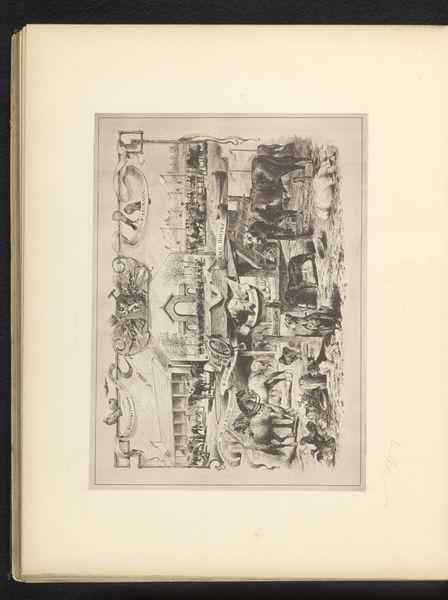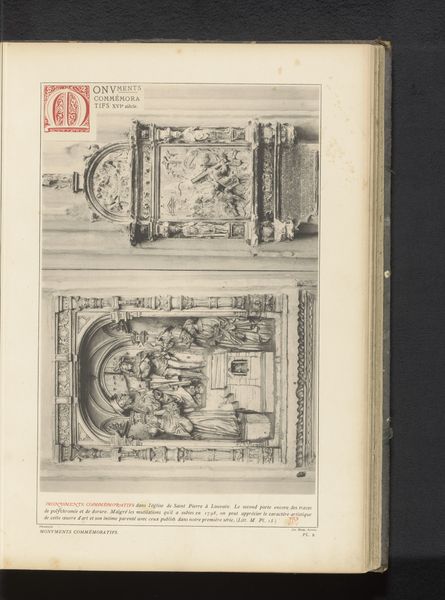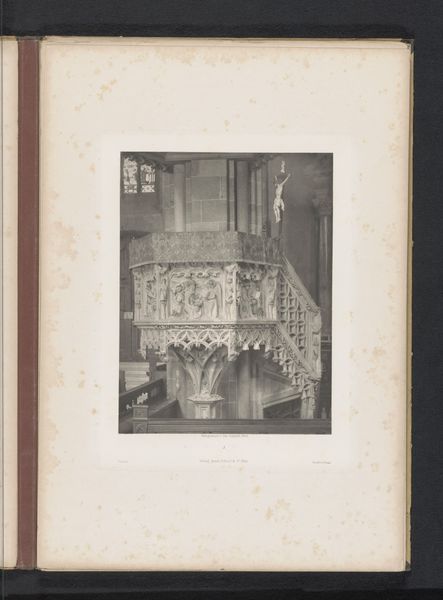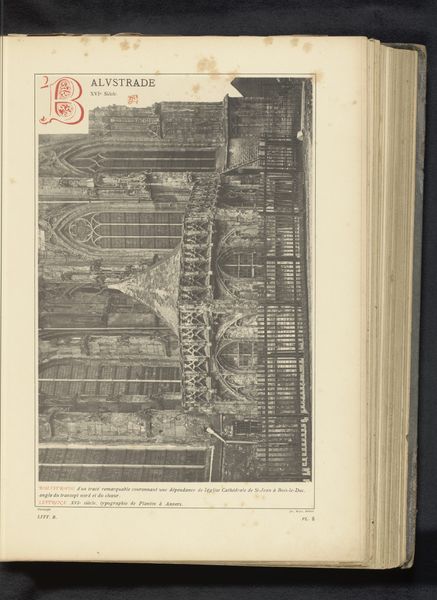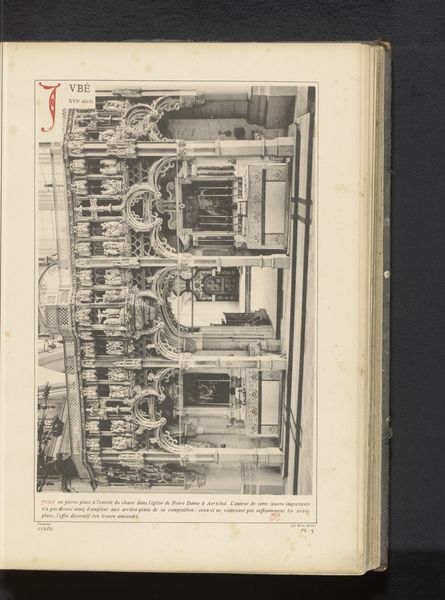
Gedecoreerde strijdwagen ter ere van de heilige Waltrudis in Mons, België before 1887
0:00
0:00
carving, print, sculpture, engraving
#
carving
# print
#
sculpture
#
history-painting
#
engraving
#
historical font
Dimensions: height 231 mm, width 341 mm
Copyright: Rijks Museum: Open Domain
Curator: This engraving depicts a "Decorated Chariot in Honor of Saint Waltrudis in Mons, Belgium," made before 1887. The original sculpture would be crafted in wood. Editor: Yes, it looks like an illustration pulled straight from the pages of a hefty old book, all about craftsmanship! What catches my eye is the level of detail, especially the little cherubs; the original carving must have been so intricate. What can you tell me about it? Curator: I'm particularly interested in how the print translates the original wood carving. How does the engraving as a reproductive medium flatten or accentuate aspects of the original object’s materiality? We should consider how printmaking democratized access to religious artifacts, transforming devotional practice through mass consumption. Editor: So you are saying that even a simple print like this one has some effects on cultural dissemination of information and belief? Curator: Absolutely! Prints such as these were crucial for disseminating images and information at the time, therefore it became a tool. This image also allows us to discuss labor; the carving of the original chariot would have been an intensely collaborative and materially demanding undertaking. It contrasts the more 'refined' notion of art with practical artisanal labor. Editor: That’s interesting! I never thought about how the process of making this sort of reproduction involves multiple layers of craft and intention. Curator: Exactly. We can think about consumption too! Why circulate an image of such grandeur? What values are being promoted via these decorations and depictions of religious pageantry? And who were these prints meant to be viewed by? Editor: Considering those layers of consumption gives me a new appreciation for what's at stake in even a "simple" historical print. It’s more than just religious worship, but cultural context. Curator: Agreed. By analyzing these layers – production, materiality, consumption, and cultural messaging – we are understanding art beyond the surface level.
Comments
No comments
Be the first to comment and join the conversation on the ultimate creative platform.
